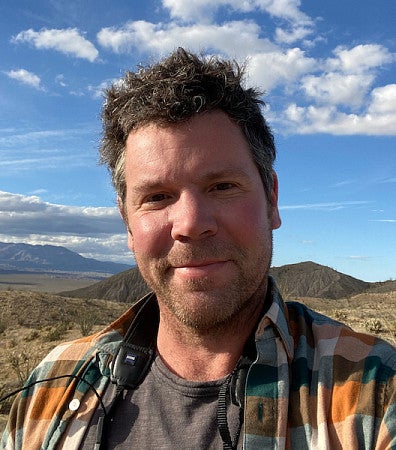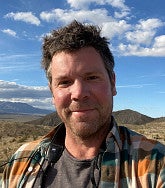
A western wildflower known as the scarlet monkeyflower could demonstrate how key evolutionary traits can help native species adapt to a rapidly changing climate.
Hotter temperatures have led to extended droughts that are reshaping the plant communities in the American West, and these conditions are likely here to stay.
“Earth’s climate has changed already due to our carbon emissions, and is going to change more, and it's important to figure out what is going to happen to earth’s biodiversity, which people value for a wide variety of reasons,” says Jeff Diez, an associate professor in the Department of Biology at the University of Oregon, which is part of the College of Arts and Sciences. Diez is a co-investigator on a National Science Foundation-funded grant looking at wildflowers. “To do so, we need a better understanding of species’ capacities to adapt to rapidly changing conditions.”
In the collaborative study, researchers from Eugene to Southern California are investigating whether the fiery monkeyflowers have responded to these stresses by naturally selecting traits for drought tolerance, and if so, how quickly that natural selection could aid in “evolutionary rescue,” or the ability of a species to evolve more quickly than the environmental changes that threaten its survival.

The results could offer insights into how different species will respond to environmental stress. “It’s possible that there is more capacity to rapidly adapt to changing conditions than we have thought, so I’m excited to be part of this collaborative project that will assess this question,” Diez says.
The scarlet monkeyflower serves as a good test case because it has been well-studied already, Diez says. Beloved by pollinators and hummingbirds and found in low-lying, moist areas like streambanks, its range spans the American Southwest from Nevada to Baja, California, and stretches as far north as Oregon’s Willamette Valley.
Diez and the research team manage three study gardens: one in Eugene, one near Yosemite, and one in Southern California. Co-investigators are based at nearby University of California, Merced and San Diego State University as well as the University of Hawaii and North Carolina State University. The funded research, which is titled “Collaborative Research: BEE: Integrating Evolutionary Genetics and Population Ecology to Detect Contemporary Adaptation to Climate Change Across a Species Range,” began in May of this year and will continue until 2025. Of the total grant of $1,452,695, Diez and the UO received nearly $250 thousand.


The other collaborators on the grant are mostly evolutionary biologists and quantitative geneticists, says Diez, who leads the Population and Community Ecology Lab, and they wanted a more ecology-focused person to be involved. “It’s a good example of a research problem that spans evolutionary and ecological questions, and why we have institutes like the Institute of Ecology and Evolution at the UO.”
In addition to the research faculty, the study involves a mix of graduate and undergraduate students, plus some high schoolers, postdocs and research technicians who gather data from the wildflower field and then use it to perform statistical modeling.
Two research methods the study uses to reveal data are reciprocal transplant and resurrection. Reciprocal transplant involves swapping individual plants, or genotypes, from one location to another and comparing how they perform to see if local adaptation is reflected in genetic variation.
Resurrection involves “resurrecting” archived seeds from past years to see how they perform against contemporary seeds. This lets researchers test whether seeds produced after a major drought event, specifically the multiyear drought that lasted from 2011-2016 in the West, perform better than those collected before the drought.
Ultimately, Diez hopes the findings will inform conservation managers about how to better prepare for long-term climate change.
“It used to be that we managed local parks or reserves by trying to conserve what is currently present, but it’s time to start thinking about conservation more dynamically and planning for changing conditions,” Diez says. “This includes considering sourcing seeds from non-local areas that may be better adapted to future conditions and forming researcher-manager partnerships to test these questions.”
-By Anna Glavash Miller, College of Arts and Sciences

